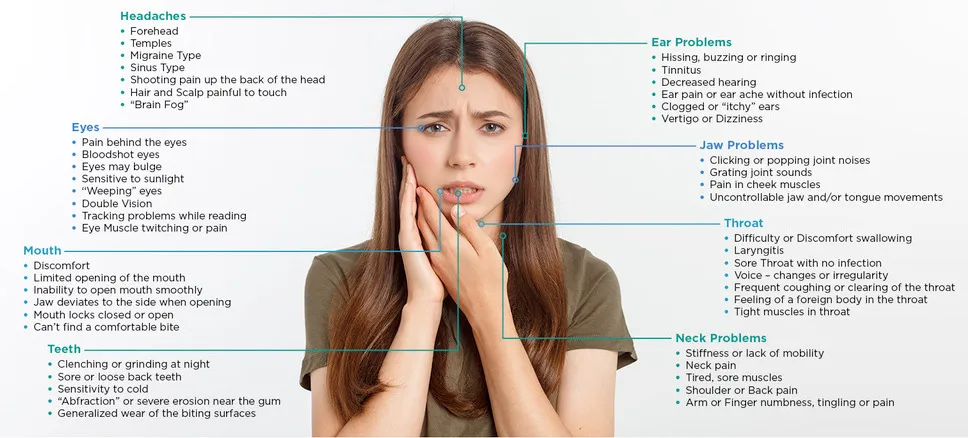Temporomandibular Dysfunctions (TMDs), also called Temporomandibular Disorder or TMJ Disorder are a group of conditions that affect the jaw joint (the temporomandibular joint or TMJ) and the muscles that control jaw movement. The TMJ is a small but complex joint that is responsible for the movement of the jaw, including opening and closing the mouth, chewing, speaking, and yawning. TMD is a common condition that affects people of all ages and can cause a range of symptoms that can impact daily life.
How does TMD Happen
Improper jaw development is one of the key causes of TMD. This can occur as a result of genetics (rarely), jaw trauma, or the development of malocclusion, which is the misalignment of the upper and lower teeth when the jaws are closed. The most common cause of improper jaw development is mouth breathing with an open mouth posture and improper tongue posture.
Mouth breathing during the growing years, can cause the facial muscles and bones to develop improperly and lead to a change in the shape of the face, including a longer face, a retruded lower jaw (Mandible), and an apparently more upper jaw (Maxilla). Additionally, mouth breathing can also lead to improper tongue posture, where the tongue does not rest in its proper position, against the palate, which can further contribute to improper jaw development.
Symptoms
According to Bader et al –
“Temporomandibular pain has a musculoskeletal origin because it occurs as a consequence of masticatory muscle function disorder and temporomandibular joint disorder. Most common diagnoses of disorders are disc displacement and osteoarthritis, but their comorbidity can also occur.”
The symptoms of TMD can vary from person to person, but can include jaw pain or discomfort, muscle pain, popping or clicking of the jaw, limited jaw movement, and headaches. In some cases, people with TMD may also experience ringing in the ears, dizziness, and neck pain. TMD can also be caused by a variety of other factors, including injury, stress, bruxism (teeth grinding), and arthritis.

Reference – Badel T et al “Clinical view of The Temporomandibular Joint Disorder” – Acta Clin Croat 2014; 53:462-470
